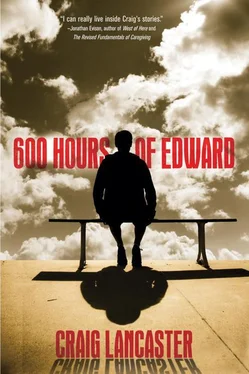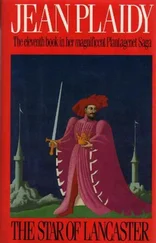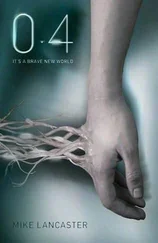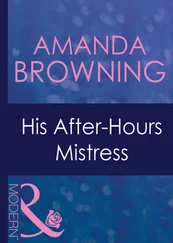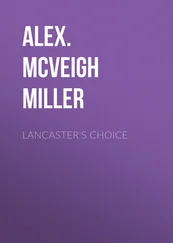“Yes.”
Sonya Starr is definitely not smiling anymore.
– • –
Sonya Starr explains to me what I will be doing today. I am to call businesses on a master list and ask if they would like to participate in the Muscular Dystrophy Association’s Turkey Time fund-raiser.
I have a script for this:
“Hello, Mr./Mrs. _______________. This is (your name) from the Muscular Dystrophy Association of Montana. I am calling to see if your business is interested in helping with our Turkey Time fund-raiser. Are you familiar with Turkey Time?”
(If the answer is no, read the next paragraph. If yes, skip to the next paragraph.)
“Turkey Time is a fund-raiser in which customers are asked if they would like to buy a turkey for one dollar to assist the Muscular Dystrophy Association. Customers who choose to buy a turkey get a paper turkey on which they can print their name, and the turkey is displayed at your place of business. The money generated goes to the Muscular Dystrophy Association in support of our range of programs for children afflicted with this terrible disease.
“Are you interested in taking part in this fundraiser?”
(If the answer is yes, proceed to the bottom and explain to the business how the program is administered. If the answer is no, read the next paragraph.)
“I’m sorry to hear that. The program is very easy to administer, requires no up-front cost to you, and helps many, many children and their families deal with the effects of this terrible disease. Are you certain that you’re not willing to take part?”
(If the answer is yes, politely thank the business for its time. If the business now expresses interest, read the last paragraph.)
“We thank you so much for your participation. I will now ensure that I have the correct address for your business, and then we will send you a packet with the turkeys and an explanation of how to get the money back to us.”
(Now verify mailing address and contact information before hanging up.)
“Again, thanks so much for your time and your generosity to the Muscular Dystrophy Association of Montana. Good-bye.”
This is going to be exhausting.
– • –
After showing me to a cubicle and teaching me how to use the hands-free headset, Sonya Starr asks me if I have ever seen the Turkey Time fund-raiser. She says she wants to hear from the “front lines” how recognizable the program is.
“No,” I say.
“It’s in all the grocery stores this time of year, as Thanksgiving approaches. Are you sure you haven’t seen the little paper turkeys at the checkout stands?”
“I use the self-checkout stands. It’s easier not to talk to anyone.”
Again, Sonya Starr isn’t smiling.
– • –
The calls are a disaster.
First of all, I’m supposed to ask for the manager or owner. I rarely get that person. I get a lot of answers like, “He goes home at ten,” or “He won’t be in this week.” I get so many of these, in fact, that I soon regret that I’m not counting and classifying the answers I’m getting.
Second of all, I get a lot of hang-ups. I’ll be halfway through my opening—“Hello, Mr. Business Owner, this is Edward Stanton with the Muscular…”—and I’ll hear, “We already gave,” and a click. This is frustrating.
Third of all, I get a lot of dodges. People tell me that only the corporate office can approve things like the Turkey Time fundraiser, and so I ask for those numbers and fill up another sheet of paper with more numbers to call.
Fourth of all, Sonya Starr’s preferred method of keeping track of the calls is terrible. She wants me to mark successful calls—as of noon, I have two of those—with a yellow highlighter. The calls that don’t connect with an owner or manager—as of noon, I have fourteen of those—take an asterisk so they can be called back. The ones that turn me down—as of noon, I have eighteen of those—are to be marked with a strike-through.
If you ask me, which Sonya Starr did not, it would be better to mark the callbacks with a yellow highlighter and the successful calls with a green highlighter. (The strike-through, of course, makes perfect sense.) The reason is simple: Green means go (as in, these Turkey Time turkeys are ready to go), and yellow means wait (as in, you will have to wait and try these numbers again). Anybody who drives a car knows the value of these particular colors.
At 12:30, Sonya Starr tells me I can go to lunch. There has been no coffee break.
– • –
At 1:29, I return from lunch and stop in at Sonya Starr’s office.
“Yes, Mr. Stanton?”
“I was wondering if I could change the way I mark the calls.”
“Why?”
“This way is dumb.”
“What do you mean?”
“You have a yellow highlighter for a successful call and an asterisk for a callback. It should be green highlighter for a successful call and a yellow highlighter for a callback.”
“Does it really matter?”
“Yes. Colors have meanings. Yours don’t make any sense.”
“But everybody in the office knows this color scheme.”
“It flummoxes me. It’s probably why the calls have gone so poorly.”
“I doubt that.”
“I’m sure of it. Well, I’m not entirely sure. I would have to do a detailed analysis to be sure and talk to all of the business owners and ask them what is causing them to say no, and I doubt that I could do that, since I have had so much trouble reaching them thus far. So it’s not right for me to say I’m sure. I prefer facts. But the fact is that I’m flummoxed by this.”
Sonya Starr smiles at me.
“Mr. Stanton, I think we won’t be needing any more of your help. Thanks ever so much for coming by.”
– • –
On my drive home, I’m stopped at every traffic light by yellow. I do not keep data on traffic lights, but I cannot remember this ever happening to me.
– • –
As I near the house, I see that Kyle is standing on the sidewalk where it crosses the driveway. His back is to the street. His hands are jammed in his back pockets, and he is staring at the garage.
I toot the horn, and he jumps aside and waves at me. I pull the car forward, set the brake, shut off the ignition, and get out.
“The garage looks good,” Kyle says.
“Yes.”
“We did a good job. Do you like the color?”
“Yes. But I’m painting it again tomorrow.”
“What? Really?”
“Yes.”
“Why?”
“Because I want to.”
“Can I help?”
“If you want to.”
“Will I get paid?”
“No.”
He smiles. “I had to ask.”
And then he’s gone, running again. I can’t remember the last time I ran. I don’t keep data on that.
– • –
Dinner is leftover spaghetti with meat sauce, warmed up in the microwave. I eat spaghetti nine times a week, every week, and it is my favorite food. And yet, tonight, I wonder if I am in a rut.
– • –
Tonight’s episode of Dragnet —the twenty-second of the fourth and final season—is called “DHQ: Night School,” and it is one of my favorites.
In this episode, which originally aired on March 19, 1970, we see two Dragnet rarities: First, Sergeant Joe Friday spends most of the episode not wearing his customary gray suit, as he is attending night school. Instead, he wears a red cardigan sweater that I can only assume was a popular item in 1970, although I don’t like to assume. I prefer facts. Second, Sergeant Joe Friday has a female interest in this episode, a young nurse who is also attending night school. I guess night school was the sort of place where you met someone in 1970, before the Internet and online dating.
Читать дальше
